10 Great Horror Films From Around The World Part 2
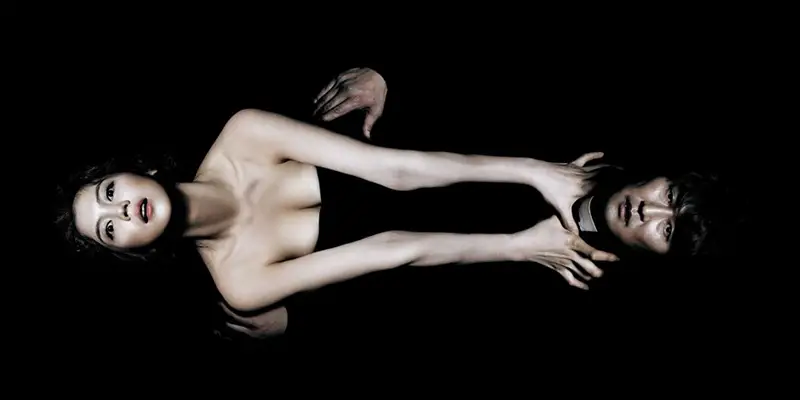
Massive film lover. Whether it's classic, contemporary, foreign, domestic, art,…
Every year I seem to arrive at an impasse with horror films. Like many other lovers of the genre out there, we will always have love for Jason, Freddy, and Michael Myers (just tell Rob Zombie to cut it out). But when you’ve seen one too many teens by the lake, and you hear Freddy say “bitch” one time too many, you realize there’s more to the genre than just blood lust and hockey masks.
Not that there aren’t original horror films in the states, but different countries have different cultures, and different cultures give way to new tales of terror. When you want something new, sometimes the best way is to go abroad.
Last year around this time, we published 10 great horror movies from around the world – now it’s time for 10 more.
1. Ghost Story of Yotsuya (Japan – Nobuo Nakagawa, 1959)
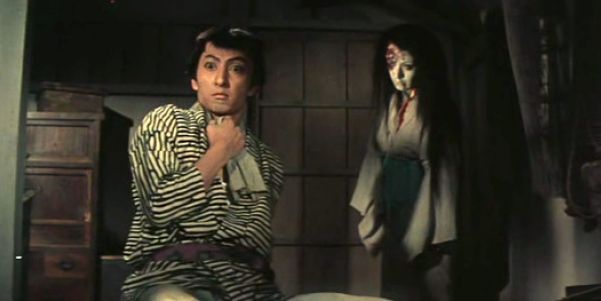
Known mostly (thanks to the Criterion release) for his cult film Jigoku, Nobuo Nakagawa’s interpretation of the classic Japanese ghost/folk tale Ghost Story of Yotsuya is superior both in execution and overall creepiness. Several adaptations of the Yotsuya have appeared over the years; some more successful than others with alternate titles attached (Over Your Dead Body, Illusion of Blood, Yotsuya Kaiden). But despite these titles, Nakagawa’s film reigns supreme.
A hot-blooded ronin corners himself by (primarily) murdering his way to attain his goals, and in the tradition of horror movies, the ghosts of his victims aren’t quiet. Highly stylized for its time, the film is an intoxicating c*cktail of visual flair, mixed with kabuki-style staged scenes (usually unfolding in long uninterrupted shots), vivid use of color, and overall eeriness; it will leave a chill down your back long after the film is over.
Nakagawa takes cues from the work of Hammer Studios, whose 1957 film The Curse of Frankenstein and 1958’s The Horror of Dracula were the first colorized remakes of Universal’s classic movie monsters, and were massive worldwide sensations. We already know about Ringu, Ju-on, and Audition; however, this rendition of Yotsuya Kaidan is largely unseen outside of Japan.
What makes Nakagawa’s film such a significant title in reference to the horror genre is that it is a distinctively Japanese story. Starting in Kabuki theater, Yostuya Kaidan has been adapted over thirty times and is a centrifugal piece in Japanese culture. And this version stands paramount for its infusion of modern techniques that showcase how film can transform folklore into some truly terrifying cinema.
2. Eyes Without a Face (France – George Franju, 1959)

It’s amazing to think this film was made in 1959, because it is pretty twisted. After disfiguring his daughter in a car accident, her sadistic (yet brilliant) surgeon father, with the help of his conniving assistant (played by Italian scream queen Alida Valli), abduct young women and remove their faces in the hopes of grafting them onto his daughter.
With a long history working in documentaries, director Georges Franju shot Eyes Without a Face in contrasting and beautiful black and white, an economic prescription when dealing with the macabre. Though the material may sound sensationalist, Franju tempers full blooded scenes of horror as if he were working with practical fact-based narrative. Favoring natural settings and contemporary ether, Eyes Without a Face undercuts horror clichés while maintaining a wholly frightening tone.
The film starts with a disjointed and yet catchy score (though some might find it dated), but it adds to the “fun”/meta-effectiveness of the film. The most frightening aspect of Eyes Without a Face doesn’t come from the infamously bloody surgery scenes, but the mask covering the disfigured face of the titular character, played with the smooth demure of Edith Scobb. It is a captive beacon of sadness whose convalescence, captivity and redemption make her an avenging Cinderella-like figure. The blank-slate emptiness of her mask proves more terrifying than her injuries; the expressionless porcelain-like substance makes her a projection of many analogies: is she objectified in a way as if she were a doll for her father’s cruel experiments? Is she so alienated from life that facial expressions are meaningless? Or could the blank slate simplicity of emptiness be more of a nightmarish facade than anything else? An even more excitable imagination could make a feminist allegory – if a woman is no longer beautiful, should she exist?
One could allege that the mask in Eyes Without a Face could be the precursor to John Carpenter’s Halloween, though the utilization of a William Shatner mask due to shoestring budget resourcefulness is the behind-the-scenes horror movie lore.
Though Georges Franju’s filmography may be limited, and this is his only “true” horror movie, it is one of the best to come out of France, and a staple in world cinema.
3. Long Weekend (Australia – Colin Eggleston, 1979)
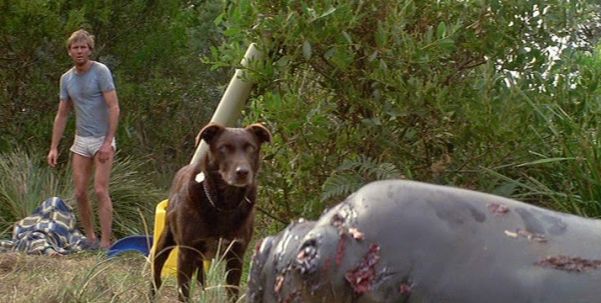
Not quite in “cult” territory, nor is it in the “classic” category, Long Weekend is a film that deserves more credit in the world of horror than it gets. When an utterly reprehensible couple goes on vacation to the rural Australian outback, they decide to piss off nature in every way possible, tearing through the wild in their range rover to go camping. After a few too many offenses to Mother Earth, Mother Earth exacts her revenge, as the poster reads: “their crime was against nature, and nature found them guilty.” You can’t forget a tagline like that.
It’s not manipulative on the filmmakers’ part when you encounter bastardly characters such as this, and you don’t feel an iota of sympathy either when nature carries out its sentence. It isn’t restricted to a snake bite or some bird attacks, but an all out assault from every walking, flying, crawling, and swimming critter you can think of. Elemental forces are at work here, and the results are scary, even though this might first sound like a clone of The Birds.
Long Weekend works because it’s smart, not something many expect from a 70’s exploitation film; which might be the reason it’s been a relatively overlooked classic. If you’re a fan of oddities and genuinely creepy horror films, Long Weekend is nearly required viewing.
4. The Devil Rides Out (United Kingdom – Terence Fisher, 1968)
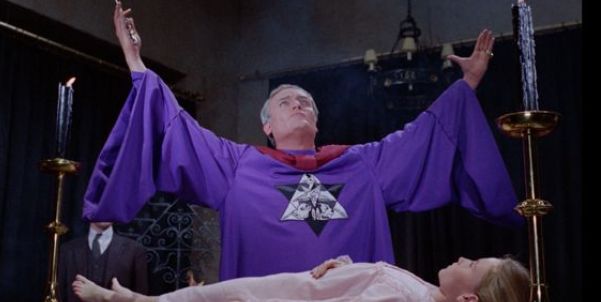
In the late 1920’s, Nicholas de Richleau (Christopher Lee) and his colleague Rex Van Ryn find a friend of the family captivated by a group of Satanists, one of whom, Mocata (Charles Gray), is quite convincing and quite a deviant bastard. Good and evil square off in the deceptively simple, yet exhilarating horror/thriller that could only have come from Hammer Studios, which at this time were at the top of their game.
The Devil Rides Out holds a special place in the Hammer Studios chronology of horror films. Directed by the foremost authority of English horror Terrence Fisher, the film is lead by the legendary Christopher Lee, who plays against type as a steadfast and charismatic protagonist fighting against the force of evil. Also, The Devil Rides Out is a singular film in Hammer’s chronology; unlike Fisher’s The Curse of Frankenstein, Horror of Dracula, or The Mummy, this contemporary thriller is a stand-alone feature. It may not belong to any of Hammer’s famous monsters, but this works to the film’s advantage more so than its disadvantage.
The Devil Rides Out hits the ground running, and the sensationalist material is played straight both by the director and the cast. Terrence Fisher, whose many films are steeped in English Gothic tradition, works wonders with Dennis Wheatley’s novel and Richard Matheson’s modern script, and everything seems to fall in place. Fisher’s construction boasts precision, and James Bernard’s score is another winning composition of deviant harmonies; with the benefit of hindsight we can be grateful he was Hammer’s resident composer.
5. Black Sabbath (Italy – Mario Bava, 1963)

Picking a Mario Bava movie can be hard because he has so many classics that are just so damn good. There is the atmospheric Black Sunday, the sumptuous The Whip and the Body, and the genuinely terrifying Kill, Baby Kill!, all three of which were almost considered. But his anthology of terror Black Sabbath ultimately took the first chair for this list. And if you are wondering, yes before this film came out John Osborne’s rock group was still called Earth.
Every anthology film has its “weak” entry, and by default the first segment of Black Sabbath called The Telephone is that. That’s not to sound disparaging, because it still delivers some chills (depending on which version you see), and has a fun finale. But the meatiest and arguably well known is the second part The Wurdalak. Starring Boris Karloff as we’ve never seen him before, he plays a scruffy, bearded, unkempt and pelt-clad ornery patriarch who may or may not be the titular monster. Wurdalak is a rudimentary type of vampire stemming from Russian folklore, and unlike other vampiric incarnations, Bava’s intonation is stripped of any supernatural romanticism.
The final and most terrifying entry of Black Sabbath is the short but sweet The Drop of Water. As we know, you don’t steal from the dead, especially when the person in question is in league with the black arts; in this case, a medium. After taking the ring from Nurse Helen, Chester is terrorized by chilling reincarnations of the dead woman. Some of Bava’s best work is going on here, and yet it’s only a third of a 93-minute anthology movie.
Black Sabbath is one of Bava’s greatest, and one of the most influential horror films of all time as well as being one of the best from Italy.
Like most of Bava’s films, this was bought by AIP and dubbed in English, with alterations made to the content of the movie. However, this means each film has its advantages; the AIP has Karloff’s English language track, but the first segment The Telephone was censored and truncated, downplaying the original lesbian subplot. So if you are wondering if it’s worth it to see both versions the answer is “yes.”
6. Valerie and Her Week of Wonders (Czech – Jaromil Jireš, 1970)
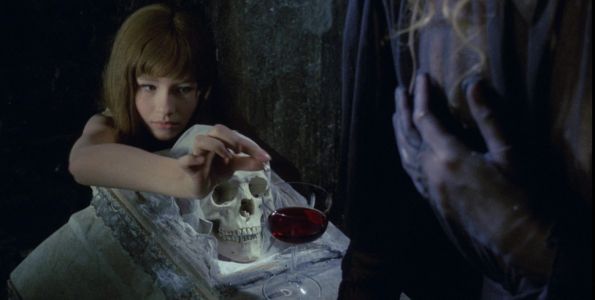
If you think using an adolescent girl’s venture into puberty as an allegorical foundation for a horror movie sounds trashy, you would be right. But Czech New Wave guru Jaromil Jireš’ folky fever dream is surprisingly eerie and nonexploitive.
Following the titular characters induction to womanhood, Valerie finds herself immersed in a hallucinatory dreamscape of vampires, sorcery, and witchcraft. Valerie and Her Week of Wonders is the macabre answer from the Czech New Wave (a movement of which Jireš was a front runner of) to Alice in Wonderland. Its freewheeling structure and whimsy takes you to another world, but keeps you grounded with its new wave aesthetic. It’s domestic setting, otherworldly atmosphere, and daring approach to an otherwise similar genre is distinctively rebellious during an especially dangerous time for directors working under the Soviet regime.
Valerie and Her Week of Wonders is a standout title because it’s a piece of cinema that could only have been made by a director like Jireš during this sensitive era in Soviet history. The horror has a charming artificiality, but also somehow communicates a genuine sense of dread, using the labyrinth of puberty as an appropriately bewildering journey. The film is an amalgam of hallucinatory horror, fantasy, and a coming-of-age tale that takes you down the proverbial rabbit hole, as if you had Mario Bava and Alejandro Jodorowsky fill in as sex ed teachers in middle school.
7. Viy – (USSR – Konstantin Yershov, 1967)
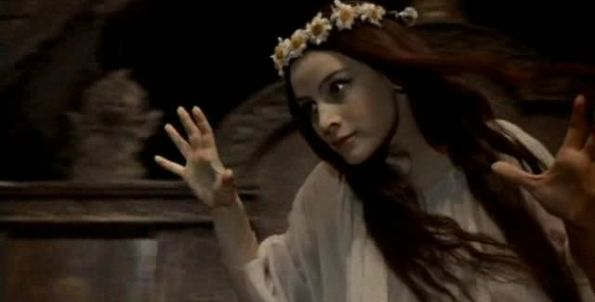
When we think of Soviet cinema, our recollections consist of the great silent expressionists such as Sergei Eisenstein, or Dziga Vertov, and genre films don’t come to mind. However, restrictions can make way for fascinating art forms, and under Soviet dictatorship filmmakers had to smuggle their films under the guise of propaganda or traditional folk stories. And that’s exactly how a movie like Viy came to be.
For those of Russian descent, or who have a well-read breadth of classic lie=terature, the story to Viy might be standard. For those of us not as well read, Viy is rooted in Russian folklore, centering around a monk who becomes the plot of demonic possession.
A seminary student is strayed from his group while on leave for vacation. After finding shelter in a barn, young monk Khoma resists the advances of an older woman, but once she reveals herself to be a witch, Khoma (a student of the righteous and holy) beats her death. Returning to the seminary, he is dispatched to see over the dying of a merchant’s daughter, who he learns is the incarnation of the very same witch he clobbered earlier in his journey. Things ramp up once Khoma is ordered to preside over her body for three nights. When the “dead” witch exacts her revenge on the brutish young monk with each passing night, her sorcery grows more and more perilous.
The visual grab bag of terror that ensues feels like the brainchild of Mario Bava taking whatever acid the AIP team was on during the sixties, and the deeper it goes, the creepier it becomes. Viy might have some dust on the shelves, but it’s a charmingly creepy film that is frequently overlooked in horror cinema. It’s a shame that Konstantin Yershov didn’t make a name for himself as a director of great horror films; however, if you consider where and when the film was made, we should be lucky he managed to make this one.
8. Thirst (South Korea – Park Chan-Wook, 2009)

Chan-Wook Park has been a filmmaker of interest since Tartan Asia Extreme introduced his now celebrated Oldboy in the states back in 2005. So when we heard he was working on a vampire film in 2009, we knew we were in for a treat. And what a treat Thirst turned out to be. Wook interpreted vampirism with his trademark gory irreverence and humor while delivering some genuine scares along the way.
Sang Kang-ho, a frequent collaborator with Wook, plays a devout Catholic priest whose faith is tried by exposing himself to an experimental cure for a virus. His attempted martyrdom results in near death, and in the tradition of not-so-subtle symbolism, he is resurrected by a mysterious blood transfusion, turning him into a vampire.
Thirst proved to be a breath of fresh air against the backdrop of brooding angsty vampires (ala Twilight), that had dominated the film market. In the mold of more traditional vampire lore, the film heightens the seductive element of evil with sly humor, sexuality, and his unique brand of stylized gore. Gore, humor, sex, violence, and technical prowess are hallmarks of his work, but Thirst is the first to explore religious themes and Catholicism.
Most great filmmakers are by default revisionists, and Chan-Wook Park is indeed that. The vampire genre needed some new life, and the undead are an excellent means for rejuvenation. Park’s movies work because he is a smart director.
9. Kill List (United Kingdom – Ben Wheatley, 2011)

What can I say about Kill List that hasn’t already been said? Well, this film has so much going for it I think we’ll be picking it apart for years now. While Kill List might be simple, it’s anything but that; this is a complex and intriguing entry in recent horror films, which is a breath of fresh air in the midst of remakes, reboots, franchises and other crap flooding the genre since the start of the 21st century.
Ben Wheatley has a cult following around his work, and since his debut feature Down Terrace he’s been a darling in the film community, as he continues to outdo himself with each subsequent film. Kill List, however, might be his best film, and easily one of the most (genuinely) terrifying modern horror movies of the last ten years.
In the best sense of this analogy, Kill List could be described as The Killer Elite (1975) meets The Wicker Man (1973), but still in a league of its own. The hints are there, but as two mercenaries take on an assignment things begin to take a turn (for the worst of course), and the resolution is as jarringly frightening as it is surprising. The occult and the everyday haven’t been merged this well since the abovementioned The Wicker Man or Rosemary’s Baby. But Kill List is still its own beast brimming with originality. See the movie with as little prerequisite knowledge as possible: the less you know, the more fun it becomes.
10. A Chinese Ghost Story (Hong Kong – Ching Siu-Tung, 1987)
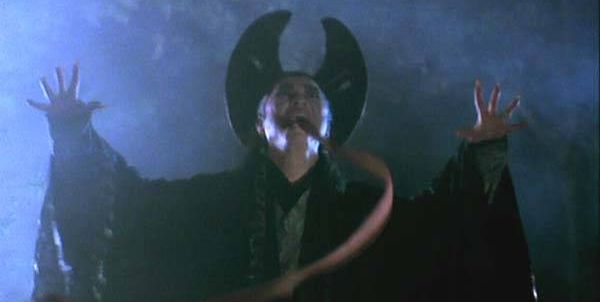
Hong Kong cinema at this time was at a high point with a massive annual output of films per year, and by the late 1980’s erratic creative lunatics like Tsui Hark and Ching Siu-Tung had taken over the asylum. A Chinese Ghost Story is probably one of the banner images of madcap cinema. Replete with flying swordplay, giant killer tongues, tree demons, beheadings, and with the occasional musical number, director Ching Siu-Tung and collaborator producer Tsui Hark take out all the stops for this supremely crafted, genre-bending lunacy.
Leslie Cheung plays the typical “meek guy” tax collector who, in the tradition of horror films, unassumingly gets lured into a mile series of exploits. Ling Choi San (Cheung) eventually falls in love with a ghost who is bound to an evil tree spirit that will eat his essence if they continue their forbidden romance.
East meets West in the best sense of the word, and this is Taoist folklore-infused with MTV generation sensibilities. But, as strange as it may sound, it works with stupefying results. The proof is in the pudding: two sequels, a 2014 remake and a TV series. Bear in mind, this isn’t just some B-movie mish-mash, but a consummately made powerhouse from two of Hong Kong’s premier wunderkinds.
Conclusion
Horror comes in all shapes, forms and sizes. While this may sound like a generic generalization, it’s true, and if you really want to explore a genre the best way is to be adventuresome and expand your pallet by seeing how other countries make them. There’s nothing wrong with classic Hollywood horror films, but if we don’t explore new territory we’ll keep getting the same titles popping up every time you try to find something new.
This is the second installment of horror movies abroad and still has only scratched the surface as far as the variety of titles out there. What are some of your favorite horror movies from abroad?
(top image Thirst (2009) – source: Focus Features)
Does content like this matter to you?
Become a Member and support film journalism. Unlock access to all of Film Inquiry`s great articles. Join a community of like-minded readers who are passionate about cinema - get access to our private members Network, give back to independent filmmakers, and more.
Massive film lover. Whether it's classic, contemporary, foreign, domestic, art, or entertainment; movies of every kind have something to say. And there is something to say about every movie.













